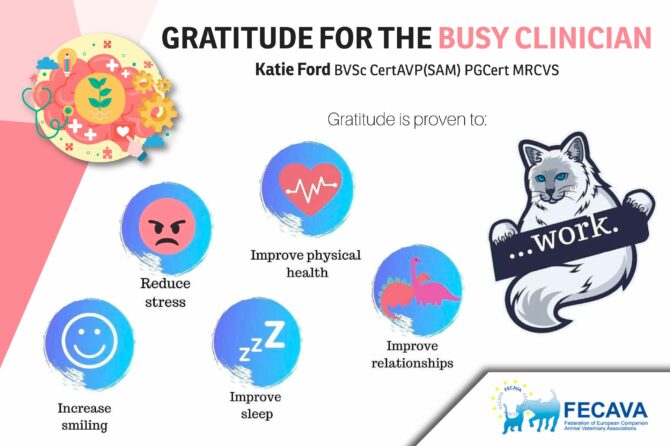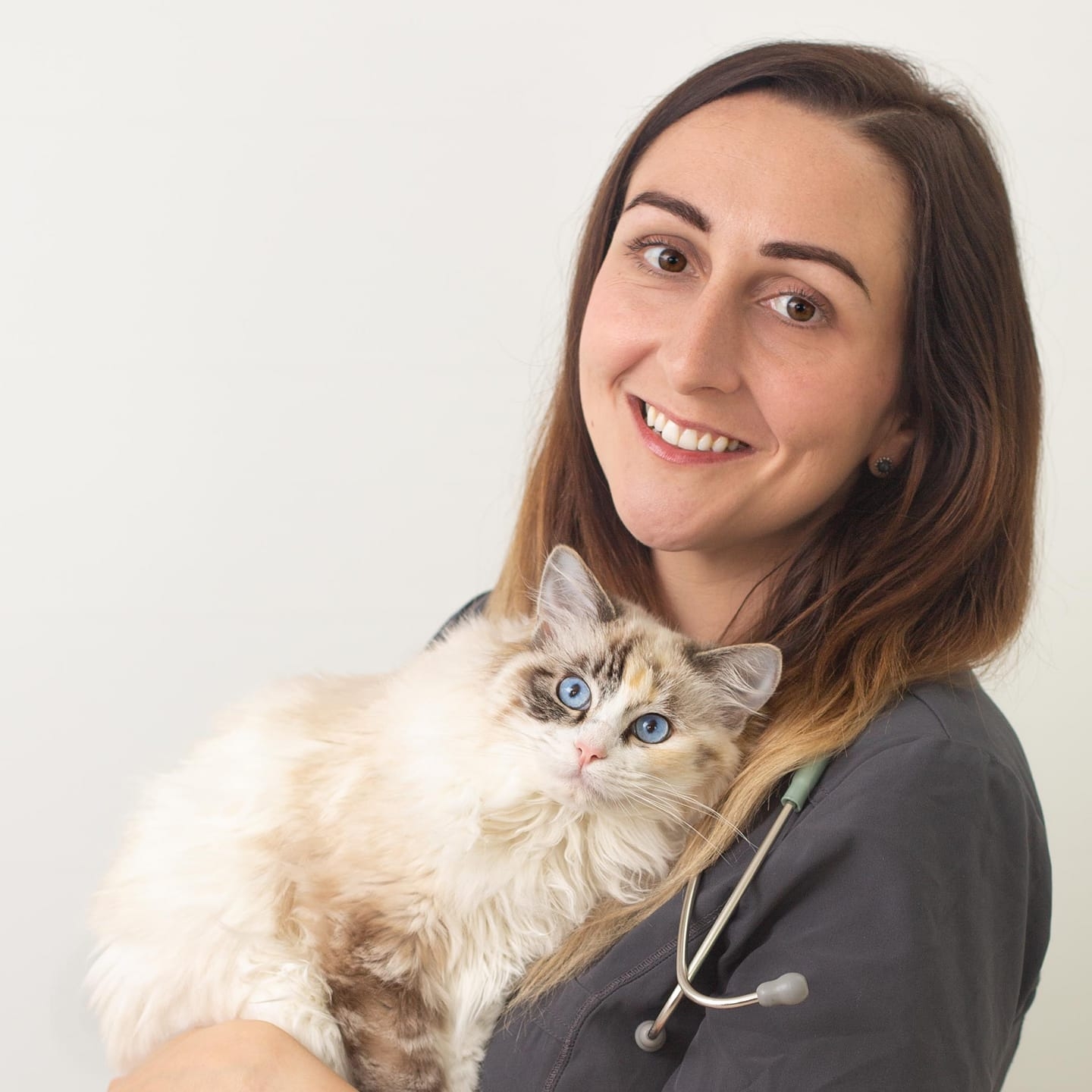
Gratitude for the Busy Clinician
Gratitude is becoming an increasingly popular topic on social media, courses, and in practice, but why? Is it just a fad? Absolutely not.
Gratitude is the act of being thankful, pleased, and showing appreciation. This may be in the form of expressing gratitude directly to others, or simply consciously acknowledging events, objects and individuals that you are grateful for.
The power of “gratitude interventions” have been extensively researched for a number of years.
Generalised gratitude studies have found that those who “count blessings” are more able to find positive qualities in those around them, as well as reduced stress, decreases in facial tension, lower depression scores, increased creativity, improved physical activity and reduced heart rate variability, to name but a few (references available on request). The research that is relevant to the veterinary profession has been collated by the author in a journal article (Ford, 2020).
Gratitude is zero-cost, readily available to all, and able to be practised at any time. With so many benefits, being free of charge, and easy to perform, could this be something that you try to integrate?
“Where do I start?”
Take imperfect action. Many people hold back from consciously practising gratitude as they feel it will be an upheaval to their routine. It doesn’t have to be. Sometimes we just have to do it.
You can start by actively thanking colleagues, friends, and family members for things that they have done that have helped you. Be the change in your practice, other people will soon follow.
Kind words cost nothing. Take a moment to appreciate what you’re grateful for when you wake up.
Quickly, our attention is drawn to negativities and niggles, that we do not take those minutes to appreciate what we have until they are threatened or lost.
Journalling is one of the most studied gratitude interventions, and this simply involves noting down things that you are grateful for, and ideally why. This is not an extensive list, just three to five
things. This does not need to be something new every day, often the “small” things we appreciate would be the huge things if they were gone. These can be work-based such as “I’m grateful that Sarah switched shifts with me, as I know she didn’t have to, but it meant I could still go to the wedding that weekend when I had no holidays left to take.” Equally, it can be home life based “I’m so grateful that I have a roof over my head, when I know that so many others don’t.”
“But I don’t have time”
Human beings are a goal-driven species. We often think that we are only doing something successfully if we are doing it every single day. That negative inner critic might tell us that we don’t have time to do it, then when we don’t do it, it tells us that we are useless and can’t do it. The good news is that many of the studies found that frequencies of only once to twice weekly were still effective timings for journalling and yielded significant results. You don’t need to journal every day.
Set yourself up for success. Put your journal in a readily accessible place, and try to ensure you have a pen at home. Find what integrates well into a routine for you. Maybe it is leaving it on your pillow to ensure it is performed before bed, or perhaps in the car, to do before you go into work in the morning. Look at the option of ‘habit-stacking’, that is, doing it straight after another habit that you regularly perform, such as brushing your teeth or eating dinner.
“I don’t have anything to be grateful for”
The times when we need gratitude the most, are when it feels like we want to do it the least.
Having food and running water, being alive, and electricity. That’s always a good starting point. By starting to consciously look for the things we are grateful for, we tune the reticular activating system in our brain to draw attention to further examples, and it gets easier with time. Be grateful that you have access to the technology and platform upon which to read this article.
“How much of a difference will this make?”
The benefits of gratitude are extensive in the literature, but it is not a magic bullet. Like with all selfcare and mindset strategies, it should be used as part of a multi-modal approach. Being so easy to perform and readily accessible, it is an infinitely valuable tool, but ideally would be combined with other approaches that benefit the mental wellbeing of individuals. Could you integrate this with other regimes?
“How long does it take to see results?”
Studies have shown improvements from twice weekly journalling in just four weeks. That’s just eight journal entries.
Who’s ready to go out and practice gratitude? Consider how you could integrate this, and how you might assess whether it is working for you or not. Is there any way you can get a friend or colleague involved and stay accountable to each other whilst trying this for a month?
References:
Ford, K., (2020). “The gratitude attitude”: growing evidence for medical and veterinary
professionals. Veterinary Nursing Journal, 35(5), pp.130-132.
Leave a reply
Katie Ford BVSc CertAVP(SAM) MRCVS
Katie graduated from Liverpool Vet School in 2012, and went on to complete her CertAVP(SAM) in internal medicine in 2016. Following her own journey with imposter syndrome, she became increasingly passionate about mindset and wellbeing, and subsequently studied to coach and help others. Whilst working 1:1 with veterinary professionals, she still works as a locum small animal vet and knows the challenges of first opinion practice. Katie is an enthusiastic speaker, talking on imposter syndrome, the science of gratitude, and preventative mindset strategies both in the UK and abroad. Alongside this, you will find her online as @katiefordvet.


Leave a reply